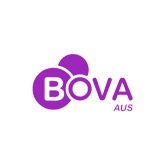Can increasing the gentamicin dose improve efficacy without compromising safety?

Gentamicin is an aminoglycoside antimicrobial commonly used in horses at 6.6 mg/kg IV once daily. Therapeutic drug monitoring (TDM) can confirm desired peak concentration is reached for common bacterial isolates, and detect toxicosis associated with high trough values.
The objective of the study was to determine the relationship between gentamicin dose and plasma concentration in hospitalized horses, and identify a starting dose range to achieve peaks > 32 μg/mL.
There were Sixty-five horses (2002–2010) receiving once-daily gentamicin with TDM performed (N = 99 sets) in the study.
This was a retrospective study. Data from hospitalized horses including weight, dose, plasma peak, and trough gentamicin concentration, creatinine concentrations and presence of focal or systemic disease were collected from medical records. Peak concentrations measured 25–35 minutes after administration were included (N = 77). Data were divided into low (<7.7 mg/kg), medium (7.7–9.7 mg/kg) and high (>9.7 mg/kg) dose groups, and were grouped by the horse having focal or systemic disease.
Peak concentrations resulting from doses ≥7.7 mg/kg were 5.74 μg/mL (SE 2.1 μg/mL) greater than peaks from doses <7.7 mg/kg (P = .007). Peak concentrations was 3.6 times more likely to be >32 μg/mL if dose was ≥7.7 mg/kg (P = .04). There were no significant effects of dose on trough or creatinine concentration. At a given dose, horses with focal disease had higher peaks than those with systemic disease (P = .039).
These data suggest gentamicin dosage should be individually determined in horses using TDM, but support an initial once-daily dose of 7.7–9.7 mg/kg IV to achieve peaks >32 μg/mL and trough concentrations <2 μg/mL. Further studies evaluating the safety of doses >6.6 mg/kg are required.
Click here to be directed to the full study.

